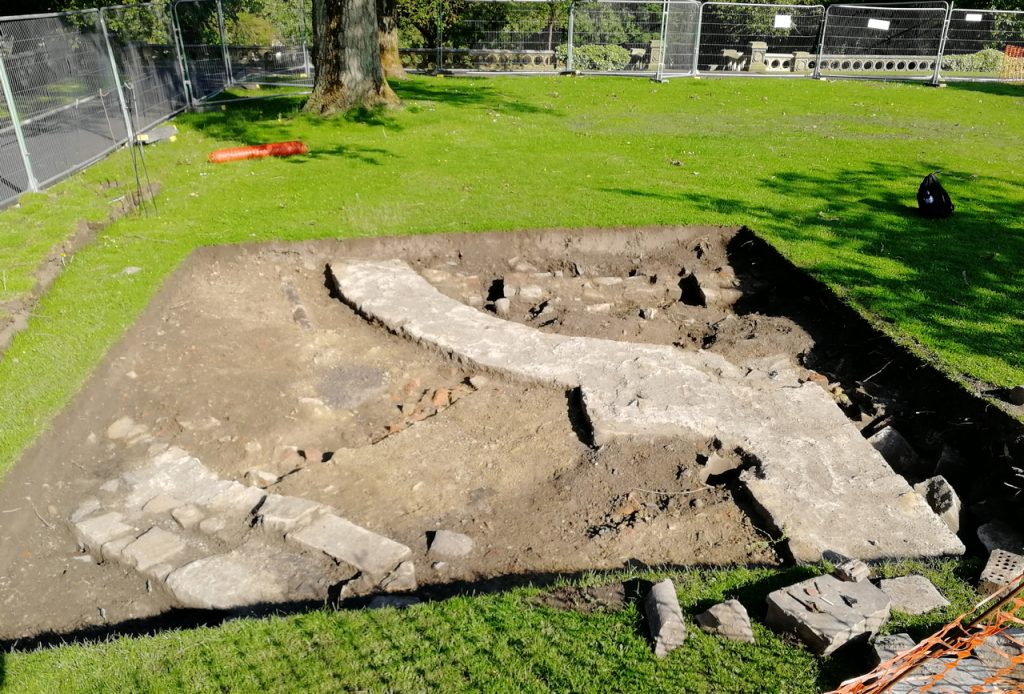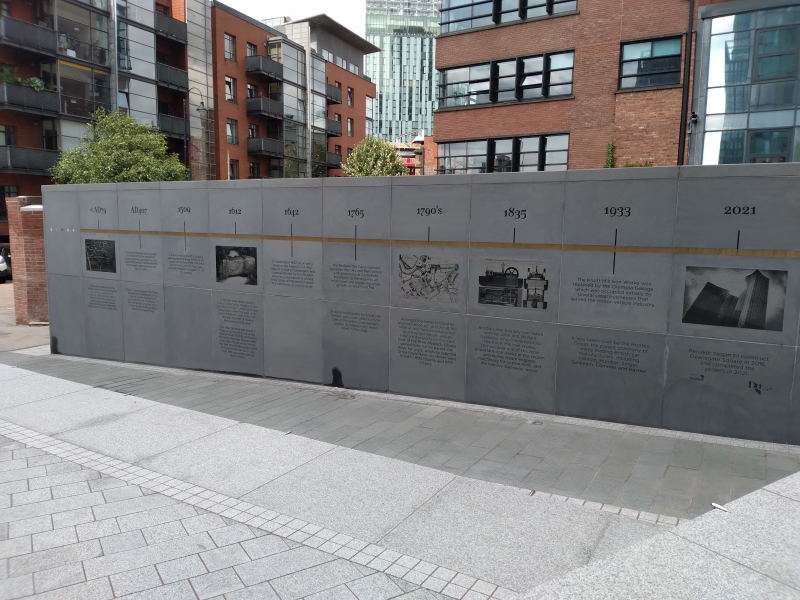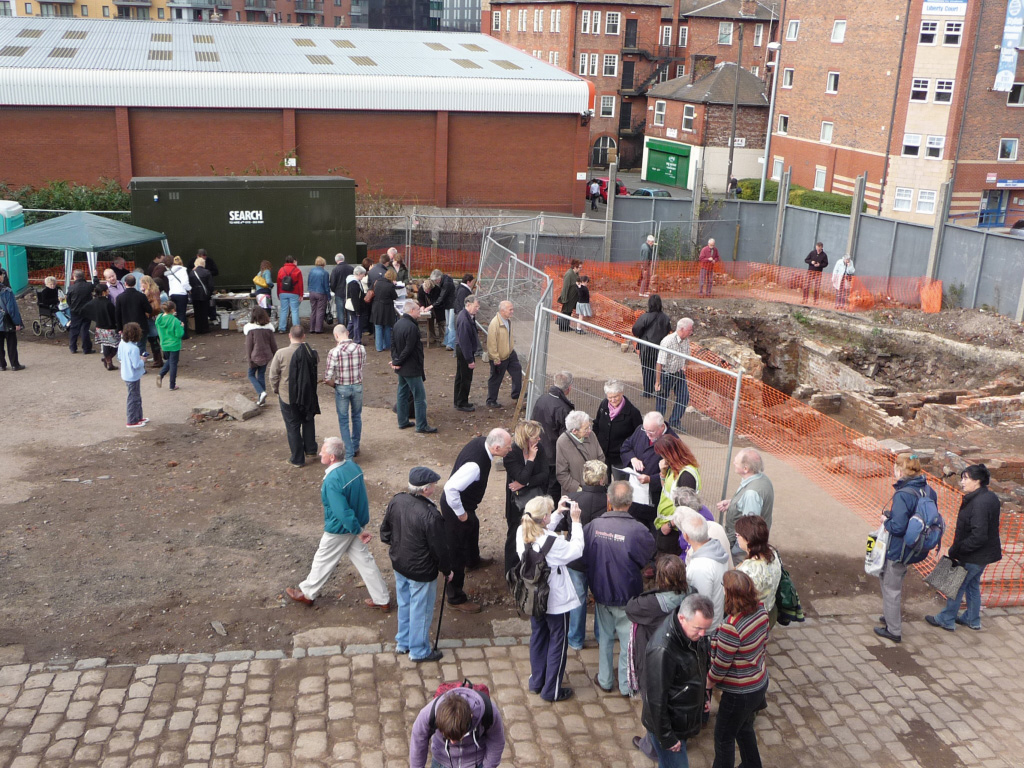Archaeology and Planning
Planning a Development
Development across Greater Manchester is guided by the National Planning Policy Framework (Department for Levelling Up, Housing and Communities, September 2023), which sets out the government’s planning policies for England and how these are expected to be applied. The policies governing development management of the historic environment and archaeology is outlined in Section 16 of the National Planning Policy Framework, Conserving and Enhancing the Historic Environment.
GMAAS staff are always pleased to provide initial advice to applicants, their agents or archaeological contractors on the archaeological issues that may affect a development proposal. Consultation with GMAAS is strongly advised at the earliest opportunity when preparing a planning application to ensure that appropriate consideration has been given to archaeological matters.

Planning applications for developments that may affect archaeological remains should be supported by a desk-based assessment and consultation with the Greater Manchester Historic Environment Record, as recommended by Paragraph 194 of the National Planning Policy Framework. In some cases, it may be appropriate to also carry out a programme of initial investigation, such as evaluation trenching, and the results submitted as a report in support of the planning application.
Evaluation trenching is a phase of initial field testing that provides information on the nature, extent and significance of any archaeological remains present on a site, and enables the requirement and scope of any further archaeological work that may be required to mitigate the impact of development. Where an archaeological evaluation is required, it is best practice and good risk management to commission the work during the development design process to minimise any delay to the construction programme.
Designated Sites
A designated heritage asset is a site, building or landscape that holds formal status under law or policy in recognition of its significant heritage values, and is afforded protection in the planning system. Examples of designated heritage assets include World Heritage Sites, Scheduled Monuments, Listed Buildings, Protected Wreck Sites, Registered Park and Gardens, Registered Battlefields and Conservation Areas.
GMAAS will refer the developer to Historic England for further advice and guidance on development proposals that may affect the most important designated heritage assets (Scheduled Monuments, Grade I and II* Listed Buildings), whilst the Conservation Officer for the relevant district authority should be consulted on proposals that involve Grade II listed buildings, Conservation Areas and Locally Listed Buildings.
Archaeological Mitigation
Desk-based assessments and other archaeological reports submitted in support of a planning application will assist in establishing the significance of any heritage assets and help define whether any further archaeological mitigation is required. This is usually secured by a condition attached to planning consent, and may consist of detailed proposals to secure the preservation of significant archaeological deposits in-situ or, if this is not possible further fieldwork to ensure that an adequate record is made of any archaeological remains that will be removed during development construction works. This may range from a formal programme of excavation in the case of significant deposits to a watching brief where remains of lesser importance are anticipated. Examples of different types of archaeological work undertaken through planning conditions across Greater Manchester are presented in the GMAAS Annual Reports.
GMAAS can provide specifications for archaeological work, comment upon and approve Written Schemes of Investigations prepared by archaeological contractors, monitor archaeological fieldwork and post-excavation programmes, and advise on the discharge of archaeological conditions.
Public Benefit
It is implicit in the National Planning Policy Framework that any historic environment mitigation work carried out in the planning system should result in public benefit. The Chartered Institute for Archaeologists (CIfA) outlines some of the ways that archaeologists can create and deliver public benefit, noting that community strength and identity can be enhanced by engaging and sharing research that advances our understanding of the past. There is also evidence that engaging with the historic environment can make a significant contribution to community well-being and promote social capital, leading to improvement in health, wealth and education (https://www.archaeologists.net/profession/publicbenefit).
GMAAS expects that any important findings from archaeological work carried out as part of a development scheme will be made easily accessible as a means of sharing knowledge and gaining public benefit. One means of achieving this is by installing a professionally designed information board, which can form an important part of the public legacy of developer-funded, community, and research archaeology projects. A wide range of information boards that have been installed on archaeology sites across Greater Manchester can be viewed here.


Archaeology uncovered on larger projects can be of sufficient interest to warrant publication as a volume in the Greater Manchester’s Past Revealed series of illustrated booklets. Particularly significant findings that address some of the research objectives set out in the North West Archaeological Research Framework may merit a more academic publication such as a journal article or, in exceptional cases, a monograph.
Considerable short-term public benefit can be gained from archaeological contractors hosting open days and site tours during excavations, where health and safety considerations permit. An example can be drawn from a public open day at the excavation of workers’ housing in Angel Meadow as part of the NOMA Regeneration in central Manchester that attracted more than 1,000 visitors, with many sharing their knowledge of ancestors who lived in the excavated houses or the immediate vicinity, adding an important element to the archaeological record. Open days at excavations at New Bailey Prison in Salford and Bridgefield Street in Stockport attracted similar levels of public interest. Further examples are embedded in the GMAAS Annual Reports.
GMAAS Annual Reports
Archaeological Contractors
GMAAS does not maintain a list of archaeological contractors and consultants. However, the Chartered Institute for Archaeologists maintains a list of Registered Archaeological Organisations that are appropriately qualified to undertake commercial projects.